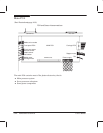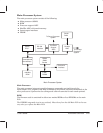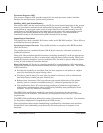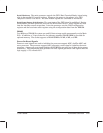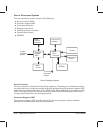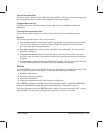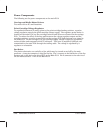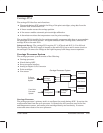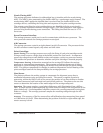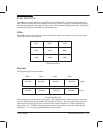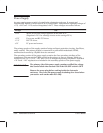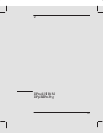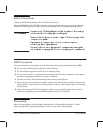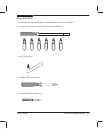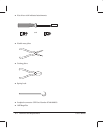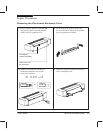
5Ć30 Functional Overview
C3187Ć90000
Nozzle Timing ASIC
The carriage processor dedicates its address/data bus to interface with the nozzleĆtiming
ASIC. The ASIC is also connected to the shuffler ASIC by a synchronous serial channel. The
nozzleĆtiming ASIC applies the shuffled data it receives from the shuffler ASIC to the
cartridge drivers, controlling the firing time and sequence of the printĆcartridge nozzles.
The outputs controlling the print cartridge drivers are disabled while the reset signal is
active. A voltage supervisor monitors the logic supply (+5V) and generates a reset signal to
prevent firing nozzles during power transitions. The falling threshold for reset is 4.71V
worst case.
Servo Processor Interface
The carriageĆprocessor serial port is used to communicate with the servo processor. The
servo processor controls the carriageĆprocessor reset signal.
A/D Converter
The carriage processor controls an eightĆchannel serial A/D converter. The processor drives
the A/DĆconverter control signals, chip select and shift clock.
Print Cartridges
Nozzle Testing The carriage processor can verify the firing of each printĆcartridge nozzle.
Firing a nozzle causes a voltage drop at the ballast resistor for that nozzle. A comparator
senses the voltage drop at each ballast resistor and outputs a pulse to a processor counter.
This enables the processor to determine whether each print cartridge is inserted properly.
Temperature Sensing A thermistor mounted on the carriage PCA allows the carriage
processor to sense ambient temperature. The processor can adjust the amount of energy
delivered to a print cartridge by changing the nozzle firing time though the nozzle timing
ASIC. The plotters compensate for changes in ambient temperature and self heating of the
print cartridges based on the data provided by the carriage processor.
Line Sensor
The plotters calibrate the writing system to compensate for alignment errors due to
mechanical tolerances using an optical line sensor. The sensor is capable of precisely
measuring, within the field of view of the sensor, the position of one line relative to another.
The sensor measures both horizontal and vertical line positions. The plotters also use this
sensor to determine the location of the media edges in the carriage sweep axis.
Operation The sensor employs a quad photo diode array with illumination from a diffuse
LED. A simple optical system employing two lenses forms an image of the test pattern on the
photo diode array. A transimpedance amplifier converts the current generated in each photo
diode to a voltage. The carriage processor samples the resulting voltage through the A/D
converter.
Accuracy The accuracy of the line sensor after selfĆcalibration when measuring lines spaced
at 1/300 inches is 0.3 mil. When determining the position of the left or right media edge, the
sensor accuracy is 6 mil.



